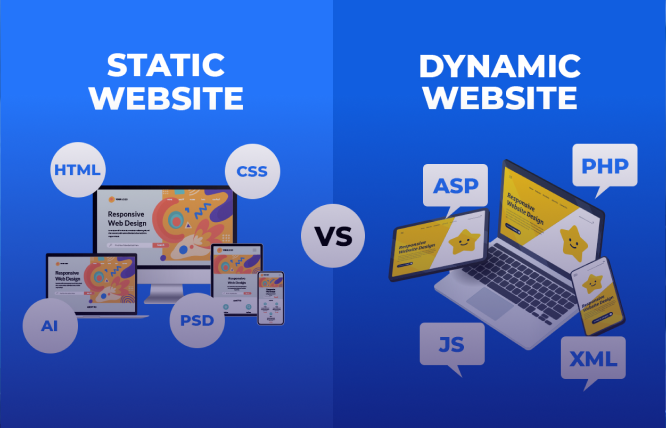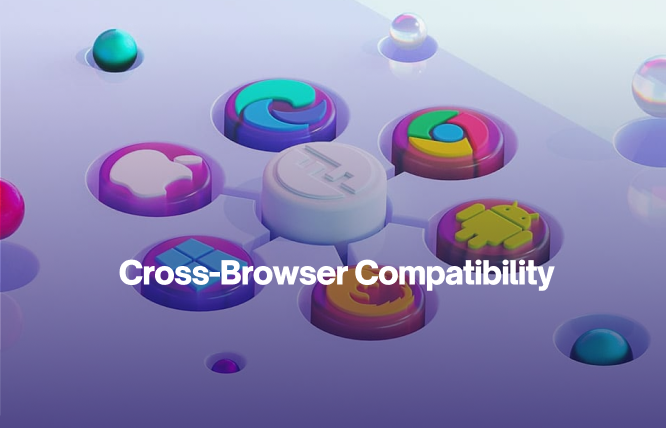Introduction
This blog post aims to compare web designer vs web developer and guide you in choosing who to work with. It has everything you need to know about the role of web developer and web designer.
If you’re starting a new project, deciding between a web designer and a web developer can be a bit confusing. Well, if you don’t know the technical roles behind web development vs web designing, then don’t worry; we have everything you need to know.
Both web designers and custom web developers are important in website building, but knowing who will be more appropriate for your project depends on what you want to accomplish.
48% of people judged the credibility of a business through website design, while the reality is it is not only the design that attracts customers but its functionality that keeps them hooked.
Well, who do you need? The inspiration of an artist or the professionalism of a programmer? Okay, let’s look and try to determine which of the roles is suitable for your project.
What Is the Role of a Web Designer vs Web Developer?
When you’re just starting as a web designer or web developer, you might find that these two professions are similar to each other. However, in reality, they are different types with different skills that are displayed during the performance of assigned tasks.
Web design is the art of designing the look and feel of your website or web page. They design the layout of the site and select themes, colours, and elements. They also make sure your brand image is promoted across the website. It would be best to consider them as the designers of your online presence, drawing plans that first capture a visitor’s attention.
On the other hand, a web developer builds a function software/website that works how you want it to work. Developers create the source code that enables all the components of a software system to function. They are responsible for the overall functionality of the site, like making sure that the site loads fast and is responsive to the different devices. The “what” is managed by the web designer, while the “how” is handled by the web developer.
Web Designer vs Web Developer: The Different Sides of Web Development
So, how do you differentiate between a web designer vs web developer? Let’s break down their roles in a table so that you know exactly what their skills are, what tools they use, and what output they produce.
| Aspect | Web Designer | Web Developer |
| Focus | Visual design, layout, and user experience | Coding, functionality, and backend systems |
| Skills | Graphic design, typography, color theory | Programming languages (e.g., HTML, CSS, JavaScript), databases |
| Tools | Adobe Creative Suite, Sketch, Figma | Text editors, version control, frameworks (e.g., React, Angular) |
| Goal | Create an appealing, user-friendly interface | Build a functional, responsive, and secure website |
| Output | Design mockups, wireframes, prototypes | Fully functional websites, web applications |
As you can see, both are important, but the one you choose depends on the requirements of your project. Hire a web designer if you desire an aesthetically appealing site that represents your business. However, if you require a website with more extensive capabilities than the one provided by a web designer, a web developer will suffice.
Types of Designers vs Developers
Web designers and developers come in various specialities, each with their own unique skill set. Here’s a breakdown of some common types:
Types of Web Designers
- UI (User Interface) Designer: These designers focus on creating intuitive and visually appealing interfaces with which users interact. They pay attention to elements like buttons, menus, and overall layout.
- UX (User Experience) Designer: UX designers go beyond aesthetics to ensure the entire user journey is seamless and enjoyable. They consider factors like usability, accessibility, and user satisfaction.
- Graphic Designer: While not exclusively web-focused, graphic designers often contribute to web design by creating visual assets like logos, illustrations, and icons.
Types of Web Developers
- Front-end Developer: These developers work on the client side of the website, focusing on what users see and interact with. They use HTML, CSS, and JavaScript to build the website’s interface.
- Back-end Developer: Back-end developers handle the server side of the website and are responsible for functionality, database management, and server interactions. They work with languages like PHP, Python, Ruby and frameworks like Node.js.
Full-stack Developer: Full-stack developers are adept in both front-end and back-end development, showcasing their versatility. They have the ability to address every element on a website.
It’s crucial to understand that there can be overlap in these roles, and some experts may focus on multiple areas simultaneously.
Web designers and developers can have distinctive roles and specialities. Here’s a breakdown of some common types:
Types of Web Designers
UI (User Interface) Designer: These designers are primarily interested in developing aesthetically pleasing interfaces through which the users engage. They focus on aspects such as buttons, menus and the website’s general layout.
UX (User Experience) Designer: UX designers do not limit themselves to the beauty of design but see to it that every aspect of a user is a delightful experience. Some of the things they consider include the simplicity of navigating through the interface and the ease of accessing through multiple screens while keeping user satisfaction in mind.
Graphic Designer: Although not confined to the web design domain, graphic designers play a part in web design by providing graphic elements such as logos, illustrations, and icons.
Types of Web Developers
Front-end Developer: Some of them work on the front end of the website, that is, the part that customers can notice and engage with. They have command in HTML, CSS and JavaScript; these languages help in the creation of the front end of the website.
Back-end Developer: They are directly involved in the server side of the website and are responsible for features, database and servers. Their job is tough as they work with programming languages such as Python, Jave, PHP, and with structures such as Node. Js.
Full-stack Developer: They are known as the jack of all, well-rounded people who can work on both the application’s front and back end. They can also undertake all tasks related to the website.
These roles can be mutually inclusive, and there might be professionals who can cover several of these areas. As to the question of when to hire a web designer for your project, several points have to be considered.
When to Hire a Web Designer for Your Project
Consider hiring a web designer if:
- You need visual appeal and user experience. If you want your website to look stunning and easy to navigate, go with a web designer.
- You want to build a brand and identity. Hire web designers; they can create a cohesive visual language that reflects your brand’s personality.
- You Wish to improve the website’s conversion rate. Hire an experienced designer who can visualise your target audience and design a website that can attract and engage visitors, leading to more conversions.
When to Hire a Web Developer for Your Project
Consider hiring a web developer if:
- You require complex functionality or integrations. A talented web developer is needed if you require features like e-commerce, custom forms, or third-party integrations.
- You have to update an existing website. Web developers have all the required skills to handle technical aspects like code maintenance and updates.
- You’re building a web application from scratch. If you’re creating a more interactive or dynamic online tool, a web developer is always the right choice.
How Do You Decide Between a Web Designer and a Web Developer?
The best approach to hiring a custom web design and developers often involves a combination of both. Here’s how to decide:
- Assess your project’s needs. Decide what design and style is more important: aesthetic or usability and possibly both, not excluding functionality.
- Consider your budget. It’s also important to understand that while web designers and developers can have vastly different prices, one has to consider one’s budget.
- Make sure that the expert you are hiring possesses the appropriate skills. Look for designers or developers who can work in the necessary fields.
- Ask for recommendations. Ask other businesses or professionals that you know for referrals.
- Interview potential candidates. Explain the objectives of your project so that you can find out who will suit the position best.
Hence, considering all these factors will enable individuals to determine if they should hire a web designer, a web developer, or both for the project.
How Do Web designer and web developer collaborate in Their Work
Although there are differences between web designers and developers, the two jobs are closely connected. For a project to be successful, there should be a good working relationship between the two professionals who are involved in the project. So, It’s not web designer vs web developer; it’s web designer and web developer.
- Design and development handoff: The web designer creates the initial design, and then the web developer brings it to life by coding the functionality.
- Iterative process: Design and development are usually a continuous process since changes are made in order to meet the needs of the client in the final stages.
- Shared goals: Both designers and developers need to have a collective comprehension of the project’s aims and objectives.
By collaborating, web designers and developers can produce outstanding websites that combine visual appeal with strong functionality.
Conclusion: Web Designer or Web Developer—Who’s the Right Fit?
The ideal choice between a web designer and a web developer often depends on the specific needs of your project. While they have distinct roles, they can also work together effectively to create exceptional websites.
If your primary focus is on visual appeal, user experience, and branding, a web designer is the right choice. They can create a visually stunning and intuitive website that reflects your brand’s identity.
If you require complex functionality, integrations, or ongoing maintenance, a web developer is the better option. They can build and maintain the technical infrastructure of your website.
In many cases, a combination of both web designers and developers is the most effective approach. Therefore, you need both; by working together, they can create websites that are both visually appealing and functionally robust.
Ultimately, the best way to decide is to assess your project’s specific needs, budget, and goals. Consider consulting with professionals in the field to get personalised advice and recommendations.
Frequently Asked Questions
Yes, a web developer can also be a web designer. Some developers have the skills and knowledge to create both the functionality and the visual appeal of a website. However, this is not always the case, as these roles require different skill sets. What is the cost of web development vs web designing? The cost of web development vs web designing can rise greatly based on factors such as: Complexity: The more features and functionality you need, the higher the cost. Design: A custom design can be more expensive than using a template. Developer’s experience: More experienced developers may charge higher rates. Location: Developers in different regions have varying rates. In general, you should anticipate spending from a couple hundred to several thousand dollars for a simple website.
Yes, web development and web design are closely linked. A website designer designs the visual aspects of a website, whereas a website developer constructs the technical foundation. Both positions are crucial in the development of an efficient and aesthetically pleasing website.
While it’s possible, it’s less common for a web designer to also be a web developer. Web design focuses on the visual aspects, while web development involves coding and technical skills. However, some designers may have basic development knowledge.
Both web design vs web development can be complex, depending on the project. Web design requires a strong understanding of visual elements, user experience, and branding. Web development involves coding, database management, and server-side programming. The complexity often depends on the specific requirements of the website.
Have questions or feedback?
Get in touch with us and we‘l get back to you and help as soon as we can!



